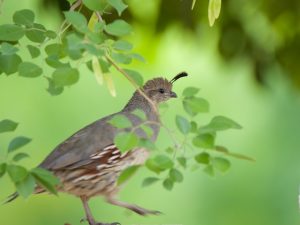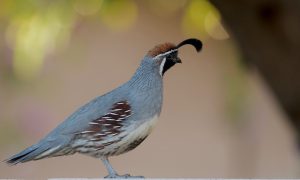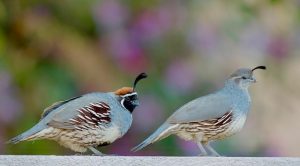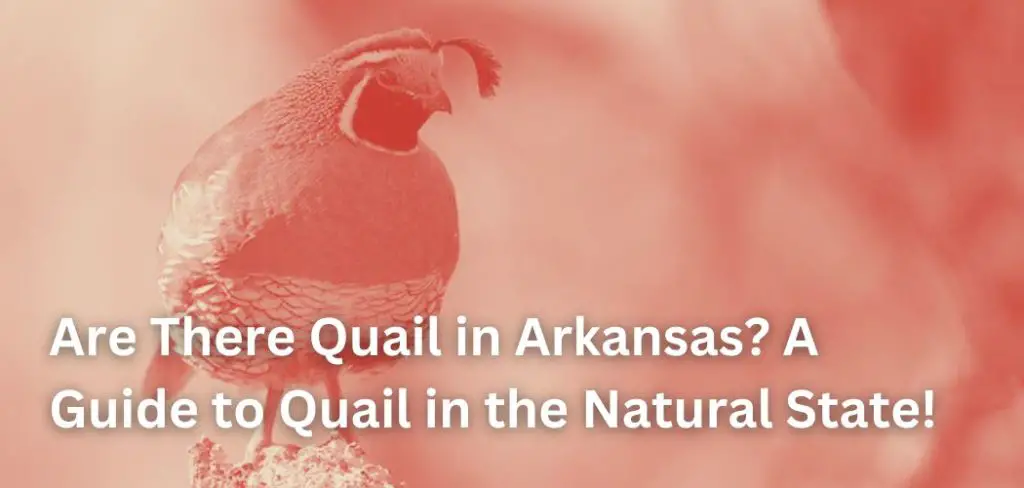Quail are small, ground-dwelling birds that are native to North America. They are popular game birds and are often hunted for sport and food.
Arkansas is home to a variety of wildlife, including quail.
But are there quail in Arkansas? The answer is yes. Arkansas is home to several species of quail, including the Northern Bobwhite, the Scaled Quail, and the Gambel’s Quail.
Quail are found in a variety of habitats in Arkansas, including grasslands, shrublands, and agricultural fields.
They are also commonly found in forested areas with open understories.
Quail populations in Arkansas have declined in recent years due to habitat loss, fragmentation, and degradation.
However, there are ongoing efforts to conserve and restore quail habitat in the state.
Key Takeaways
- Arkansas is home to several species of quail, including the Northern Bobwhite, the Scaled Quail, and the Gambel’s Quail.
- Quail are found in a variety of habitats in Arkansas, including grasslands, shrublands, and agricultural fields.
- Quail populations in Arkansas have declined in recent years due to habitat loss, fragmentation, and degradation, but there are ongoing efforts to conserve and restore quail habitat in the state.
Quail in Arkansas
Arkansas is known for its abundant wildlife, and quail are no exception. The state’s diverse landscape provides ideal habitat for bobwhite quail populations to thrive.
Bobwhite Quail Populations
Bobwhite quail are found throughout Arkansas, but their populations can vary depending on the region and time of year.
The Arkansas Game and Fish Commission (AGFC) conducts annual surveys to monitor quail populations and adjust hunting regulations accordingly.
In recent years, the AGFC has reported a decline in quail populations due to habitat loss and other factors.
However, conservation efforts and habitat management practices are being implemented to help restore quail populations in the state.
Quail Hunting in Arkansas
Quail hunting is a popular activity in Arkansas, and the state offers a variety of hunting opportunities for both residents and non-residents.
The AGFC regulates quail hunting to ensure sustainable populations and responsible hunting practices. Hunters must have a valid hunting license and follow all state hunting regulations.
Arkansas Game and Fish Commission
The Arkansas Game and Fish Commission is responsible for managing the state’s wildlife resources, including quail populations.
The AGFC works to promote conservation and sustainable use of wildlife resources through habitat management, research, and education.
The commission also regulates hunting and fishing activities to ensure responsible and sustainable use of these resources.

In conclusion, Arkansas is home to healthy populations of bobwhite quail, but conservation efforts are necessary to maintain their populations.
The AGFC plays a vital role in managing quail populations and promoting responsible hunting practices.
Habitats of Quail
Quail are found in a variety of habitats in Arkansas, including grasslands, croplands, and brushy areas.
The following sub-sections will describe some of the common habitats where quail can be found in the state.
Native Grasses
Native grasses are an important habitat for quail in Arkansas. These grasses provide cover for nesting and brood-rearing, as well as food in the form of seeds and insects.
Some of the native grasses that are commonly found in Arkansas include big bluestem, little bluestem, Indian grass, and switchgrass.
Bare Ground
Bare ground is another important habitat for quail in Arkansas. This habitat provides cover for quail to escape predators and forage for food.
Bare ground can be found in areas where the soil is exposed, such as along roadsides, in fields that have been recently plowed, and in areas where vegetation has been removed.
Weedy Crop Fields
Weedy crop fields are another important habitat for quail in Arkansas. These fields provide cover and food for quail, as well as a place to nest and raise their young.
Weedy crop fields are typically found in areas where crops are grown, such as corn and soybean fields.
Brushy Areas
Brushy areas are also important habitats for quail in Arkansas. These areas provide cover for quail to escape predators and forage for food.
Brushy areas can be found in areas with shrubs, small trees, and other types of vegetation. Some of the common brushy areas where quail can be found in Arkansas include fence rows, hedgerows, and overgrown fields.
In summary, quail in Arkansas can be found in a variety of habitats, including native grasses, bare ground, weedy crop fields, and brushy areas. These habitats provide cover, food, and nesting and brood-rearing sites for quail.
Conservation and Restoration of Quail
Quail Forever
Quail Forever is a non-profit organization that works towards the conservation of quail and their habitats. They aim to enhance and conserve quail populations by restoring and protecting their habitats.
Quail Forever works with private landowners to create suitable habitats for quail and other wildlife. They offer various programs and resources to help landowners manage their land for quail conservation.
Private Lands
Private lands are crucial for the conservation and restoration of quail populations in Arkansas. Private landowners can support quail conservation by managing their lands for quail habitats.
They can create suitable habitats by restoring native vegetation, planting cover crops, and providing food and water sources for quail.
Private landowners can also work with organizations like Quail Forever to learn about best management practices for quail conservation on their lands.
National Bobwhite Conservation Initiative
The National Bobwhite Conservation Initiative (NBCI) is a collaborative effort to restore and enhance bobwhite quail populations and their habitats.
NBCI works with state wildlife agencies, private landowners, and other organizations to implement conservation strategies for quail populations.
The initiative aims to restore quail populations to sustainable levels by focusing on habitat management, research, and monitoring.
The NBCI has identified Arkansas as a priority state for quail conservation due to the decline in quail populations over the years.
The initiative has developed a unified strategy to restore wild quail populations in Arkansas and other states.
The strategy includes habitat management, research, and monitoring, as well as outreach and education to private landowners and the public.
Private landowners play a critical role in the success of the NBCI’s conservation efforts. The initiative offers technical assistance and resources to private landowners to help them manage their lands for quail conservation.

Private landowners can also participate in the NBCI’s Coordinated Implementation Program, which provides funding and technical assistance for habitat management projects on private lands.
Overall, the conservation and restoration of quail populations in Arkansas requires the support and collaboration of private landowners, organizations like Quail Forever, and initiatives like the National Bobwhite Conservation Initiative.
By working together, these entities can enhance and conserve quail populations and their habitats, ensuring the survival of this iconic species for future generations.
Threats to Quail Population
Quail populations in Arkansas face several threats that can significantly impact their numbers. These threats include predators, habitat loss, and agricultural practices.
Predators
Predators are a significant threat to quail populations in Arkansas. Common predators of quail include hawks, owls, snakes, and mammals such as raccoons, skunks, and foxes. Predators can significantly reduce quail populations, especially during the nesting season when quail are most vulnerable.
Landowners can help reduce the impact of predators by providing brush piles and other cover for quail to hide and nest in.
Habitat Loss
Habitat loss is another significant threat to quail populations in Arkansas. The loss of native grasslands, woodlands, and savannas has significantly reduced the amount of suitable habitat for quail.
Fescue, a non-native grass species, has also replaced native grasses and has reduced the quality of quail habitat. Landowners can help improve quail habitat by thinning trees, planting native grasses, and removing fescue.
Agricultural Practices
Agricultural practices can also impact quail populations in Arkansas. The use of herbicides and pesticides can reduce the availability of food and cover for quail.
The removal of fence rows and the conversion of grasslands to croplands can also reduce the amount of suitable habitat for quail.
Landowners can help improve quail habitat by implementing agricultural practices that are compatible with quail conservation, such as leaving unharvested crop borders and planting cover crops.
Overall, quail populations in Arkansas face several threats that can significantly impact their numbers.
Landowners and conservationists can help mitigate these threats by providing suitable habitat, reducing the impact of predators, and implementing agricultural practices that are compatible with quail conservation.
Quail and Other Wildlife
Arkansas is home to a diverse range of wildlife, including quail, deer, wild turkey, birds, fish, and butterflies. This section will focus on quail and other wildlife in Arkansas.
Birds
Arkansas is a great place for birdwatching, with over 400 species of birds recorded in the state.

Some of the most popular bird species in Arkansas include the Bald Eagle, the Northern Bobwhite Quail, the Wild Turkey, and the Wood Duck. The Northern Bobwhite Quail is a popular game bird in Arkansas, and can be found throughout the state.
Fish
Arkansas is also known for its excellent fishing opportunities. The state has over 600,000 acres of lakes and 90,000 miles of streams and rivers, providing ample opportunities for fishing enthusiasts. Some of the most popular fish species in Arkansas include bass, catfish, crappie, and trout.
Deer
Deer hunting is a popular activity in Arkansas, with over 300,000 deer hunters in the state. Arkansas is home to two species of deer, the White-tailed Deer and the Mule Deer. The White-tailed Deer is the most common species in Arkansas, and can be found throughout the state.
Wild Turkey
The Wild Turkey is another popular game bird in Arkansas. The state has a healthy population of Wild Turkeys, and they can be found in many areas throughout the state. Turkey hunting is a popular activity in Arkansas, with many hunters coming from out of state to hunt in Arkansas.
In conclusion, Arkansas is a great place for wildlife enthusiasts, with a diverse range of wildlife to observe and hunt. Whether you are interested in birdwatching, fishing, or hunting, Arkansas has something to offer.
Quail Hunting
Arkansas is known for its abundant quail population, making it a popular destination for quail hunting enthusiasts. Here is some important information to keep in mind for those planning a quail hunting trip in Arkansas.
Hunting Seasons
The quail hunting season in Arkansas typically runs from November to February. However, it is important to check the Arkansas Game and Fish Commission website for any changes or updates to the hunting season.
Hunting Regulations
Quail hunters in Arkansas must have a valid hunting license and comply with all state hunting regulations. The bag limit for quail in Arkansas is 6 birds per day, with a possession limit of 12 birds. It is important to note that hunters are not allowed to shoot quail in flight.
Hunting Equipment
When it comes to quail hunting equipment, hunters typically use a 12 or 20-gauge shotgun with a modified or improved cylinder choke. It is also common to use bird dogs, such as pointers or setters, to help locate and flush out quail. Hunters should wear appropriate clothing and footwear for walking through fields and brush.
Quail hunting in Arkansas can be a rewarding experience for those who are well-prepared and follow all state hunting regulations.
